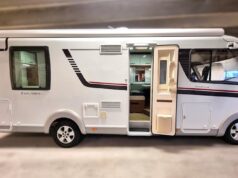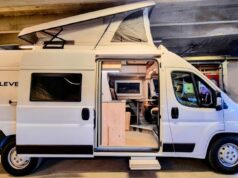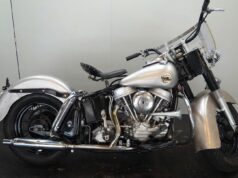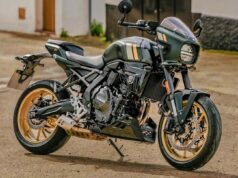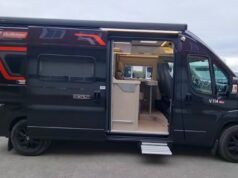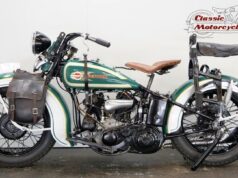This fine Imperia is fitted with a Bosch lighting set, Bosch horn, Bosch MagDyno, B&B carburetor, steering damper and speedo. It has been restored in 2019 to high standard.Fr. Becker’s Imperia factory at Cologne, Kölner Motorrad und Maschinenbau (K.M.B.), initially built 247cc and 347cc ohv Blackburne-engined machines and also versions with the 490cc single-cylinder ohv JAP, but most had Swiss MAG power units of 346cc, 496cc, 596cc, 746cc and 996cc. With the exception of the smallest, all were ioe or ohv V-twins.
source.image: classic-motorcycle.com
Becker became insolvent in 1926 and the brothers Felix and Rolf Schröldter purchased Imperia and moved the factory to Bad Godesberg. Early in the 1930s famed Dutch designer Arthur F. Dom joined the firm, and during this period models with MAG 497cc IOE, 678cc V-twin ohv JAP and Sturmey-Archer 346cc engines were developed, but mainly 248cc, 348cc and 498cc four-valve Rudge-built Python proprietary ohv four-valve singles. The Imperia Python machines were widely used in competition. 1933 saw the introduction of Villiers-engined models of 150 & 200cc.
That same year, import of foreign engines into Germany became increasingly difficult due to high taxes imposed by the Nazi government, and Dom, being a foreign national, left. Locally sourced Bark two- and four-stroke engines were employed in several models, and Rolf Schröldter designed a range of new and very unconventional two-strokes. The first was a 348cc double-piston single with the pistons running in opposite directions and a single sparkplug in the centre, based on a Junkers patent. There were really two crankshafts, one on each side of the cylinder.
Advertisement
They were connected by a chain and on top was a supercharger. This aircooled engine was developing well in 1935 when an international ban on alcohol fuels in racing took force, and major cooling problems were encountered when running benzine fuel. Imperia again ran into financial difficulties, due in the main to the production of too many unconventional designs. These included a 498cc horizontally-opposed two-stroke twin with Trilok gearbox and shaft drive, and the company was also building 746cc sports and racing cars. As a result, production was halted towards the end of 1935.


